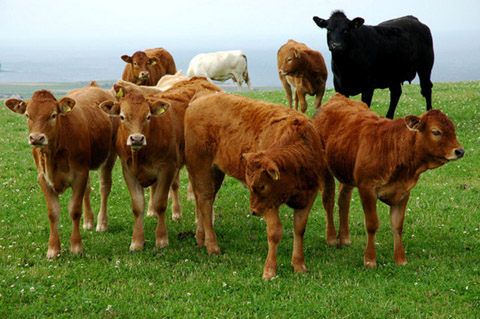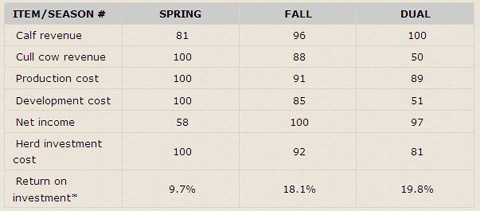
From the 2009 September Beef Cattle Browsing e-newsletter
Texas AgriLife Extension Beef Cattle
College Station, Texas
Predicted financial returns for 2007 to 2016 were simulated using production data from the King Ranch and projected cattle prices by month within year from CattleFax. Three calving seasons were compared: spring (Feb 1 to Apr 15), fall (Sep 15 to Dec 1), and dual (both fall and spring). Results were as follows:

# Highest season value = 100. Other season values in relation to highest.
* Return on investment in actual percent.
Spring calving had the lowest revenue from calf sales; revenue from cull sales was highest but this was due to more replacements being required, resulting in highest cost of developing replacement females. Fall calving and dual calving were similar in calf revenues and production cost. In the dual calving system, open cows were rolled over once into the next season. Therefore, fewer replacements were needed, replacement cost was lower, and cull revenue was lower.
Spring calving had lowest net income, highest herd investment cost, and lowest return. Fall and dual were similar in net income, but dual had lower herd investment cost and therefore slightly higher return.
In this situation, spring calving was definitely the least desirable system. However, producers should consider their particular production and marketing conditions. And where applicable, especially where forage growing seasons are long, dual calving might be indicated. But it should be noted that dual calving does not mean the lack of a season, that is, year-round calving. (Univ. of Missouri, Texas A&M University, King Ranch Institute for Ranch Management, King Ranch; Prof. Anim. Sci. 25:74)
